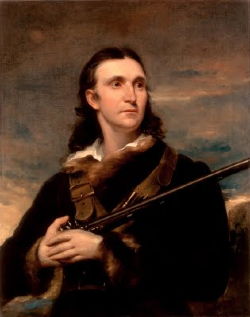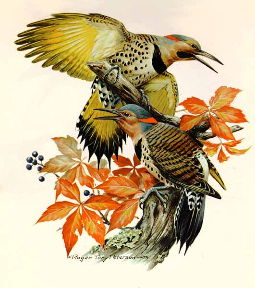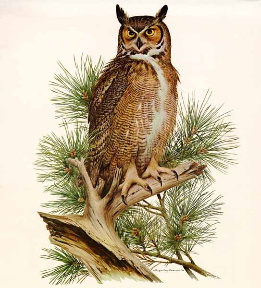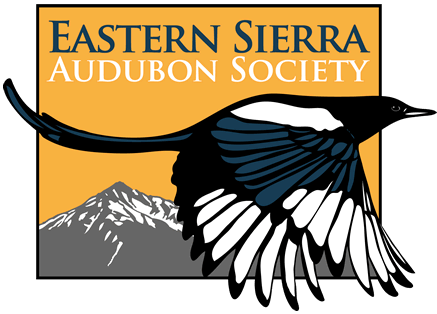
John James Audubon, with shotgun
Attribution for the rise of birdwatching in America lies with the paint and brushes of Roger Tory Peterson. This self-taught artist, born in New York in 1908, had two paintings hung in the American Ornithologists Union’s national exhibition in 1925, when he was seventeen years old! In 1934, his Field Guide to the Birds sold out in five days and this was during the Great Depression! Subsequent editions sold millions followed by bird field guides by multiple authors, all with the goal to represent bird species in a way that allowed the public easy access and guidance in identifying the birds around them. These guides replaced the shotgun for identifying birds.
~~ These guides replaced the shotgun for identifying birds. ~~

Roger Tory Peterson, with sketchpad
Thanks to field guides by Peterson, Pough, Robbins, Sibley, et al. and National Geographic Society, birdwatching has come a long way. An army of “birders” has developed and they spend much time and money chasing birds. This army is made up of informal, amorphorus divisions that are defined by their goals. Most are listers, that is, they keep tallies of the species they have seen in their yard, county, state, region, country, life, special patch, etc. The rules are also informal and while there are general rules “that should be followed”, the final decision to list a bird is up to the observer. Much has been learned about bird distribution based on the data collected by a cadre of serious field observers who spent extensive time studying birds, their plumages, vocalizations, molt, behavior, movements, etc. all the while adding to their own personal lists. Listing often leads to in-depth data collecting and advanced avian studies.

Flickers, by Roger Tory Peterson(Image from ArtUSA)
A generalized protocol is 1) write or discuss a description of the bird as you observe it and transcribe it promptly; 2) photograph the bird; 3) call others so they may corroborate your identification; and 4) depending on the level of rarity of the species, submit documentation to the county and/or state committees. Do not spend time writing that could be spent observing the details of the bird (plumage, behavior, vocalizations, etc.). Some birds are extremely difficult to photograph but you should be as aggressive as possible, without destroying habitat or significantly disturbing the bird, in trying to get an image. These images are in-lieu-of a specimen and required for some species by some committees in order to gain acceptance of a claim. In the last decade plus, the advent of digital cameras, small and large, has radically improved the quality of evidence being submitted…and they aren’t as heavy, cumbersome, or noisy as shotguns!

Great-horned Owl, by Roger Tory Peterson (Image courtesy of ArtUSA)
The “Long Way to Go” is in encouraging birders, everywhere, to more thoroughly document their claims. Data gathering has a different set of rules and providing evidence is a basic requirement. The time is past when an observer can submit a claim of a totally unexpected bird species without at least a written description and hopefully, an image, and expect that their stature is adequate for acceptance.
Many birders have embraced another group of fliers, the lepidops and odonates, where no claim of a rare or out-of-range species is accepted without unequivocal photographic evidence or a specimen. Bird data gatherers might want to consider applying the same self-imposed standard on themselves minus the specimen gathering!
Tags: lark, owl
